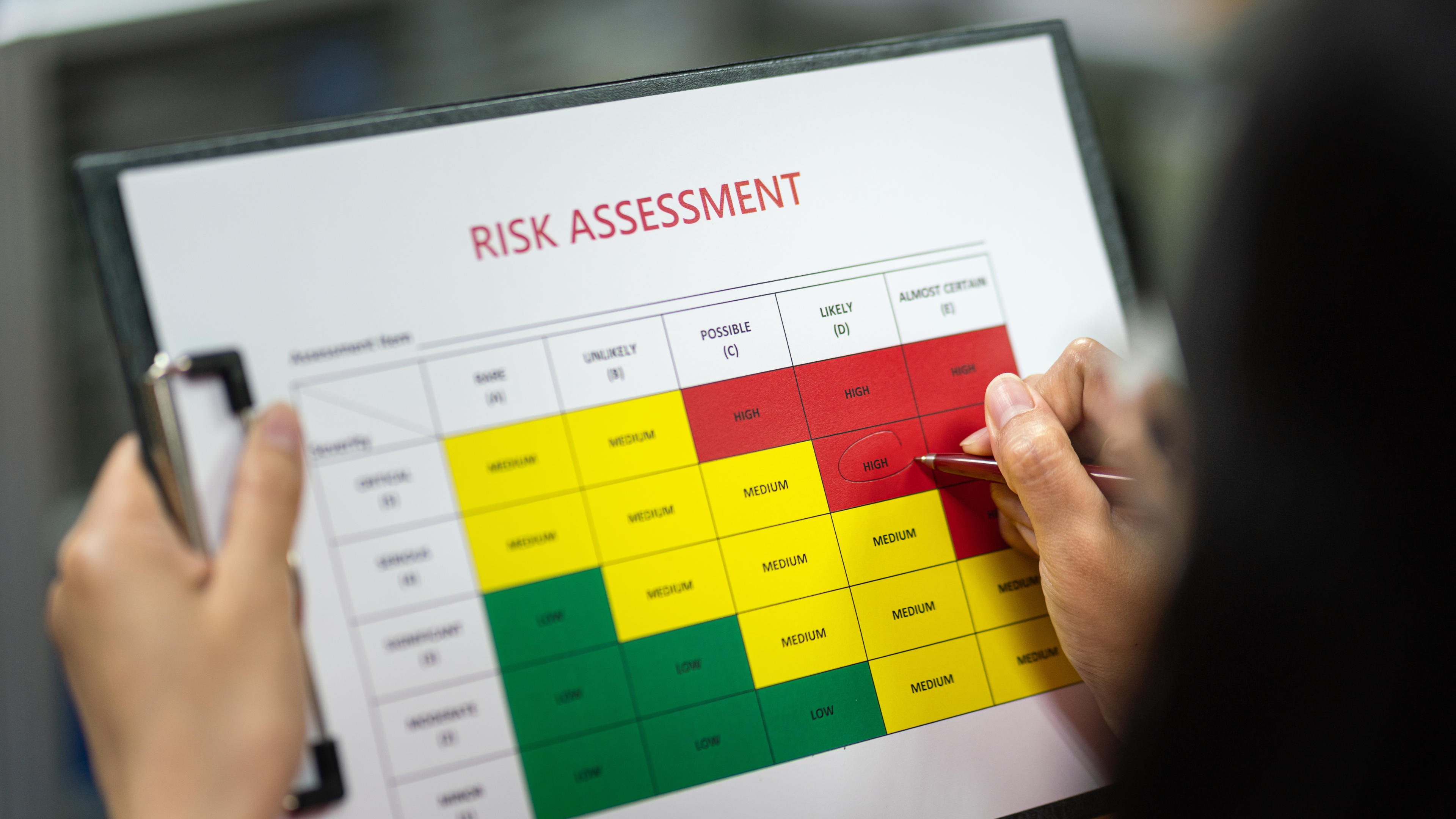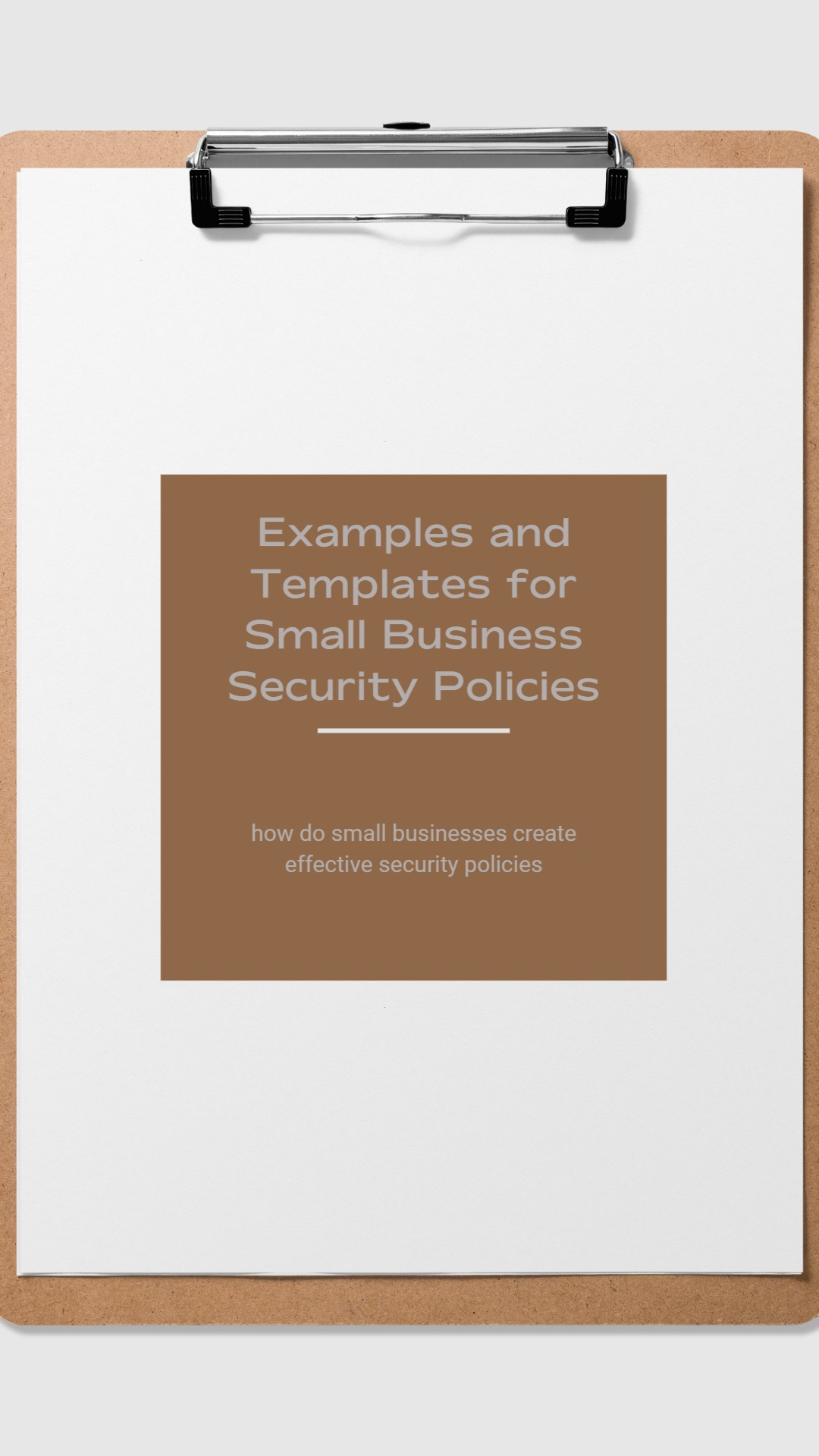How Do Small Businesses Create Effective Security Policies: Creating Effective Security Policies for Small Businesses
In the digital age, small businesses face numerous challenges, especially when it comes to securing their sensitive data and systems. With cyber threats on the rise and a growing need for compliance with industry-specific regulations, creating and enforcing effective security policies is more important than ever. But how do small businesses create effective security policies that not only protect their valuable assets but also meet their unique needs? Read on to learn about the importance of security policies, key components, customization strategies, and practical examples to help you build a robust security foundation for your small business.
Key Takeaways
- Small businesses must prioritize the creation and implementation of robust security policies to mitigate cybersecurity risks.
- Security measures should include firewalls, antivirus software, access control measures, encryption technology and employee training.
- Customized security policies should take into account industry regulations, company size/structure & available resources for successful implementation & enforcement.
Understanding the Importance of Security Policies for Small Businesses

Small businesses, facing a multitude of cyber threats and regulatory demands while safeguarding sensitive data, benefit greatly from security policies. A tailored security policy can effectively mitigate cybersecurity risks and maintain regulatory compliance for these businesses.
We will now unfold the primary reasons that make the creation and implementation of robust security policies, including a private network, a priority for small businesses.
Cyber Threats Targeting Small Businesses
Small businesses are particularly vulnerable to cyber attacks, with approximately 43% of all cyber attacks targeting them. These businesses often possess valuable information that is attractive to cybercriminals, yet lack the robust security measures implemented by larger organizations. A cyber security breach can have devastating consequences for small businesses. Common cyber threats faced by small businesses include malicious software, such as malware, viruses, ransomware, spyware, and phishing. To protect against these threats, small businesses must implement basic security practices, such as installing antivirus software, firewalls, and conducting regular risk assessments.
Besides these measures, educating employees plays a significant role in reducing cyber threat risks. By empowering employees with the knowledge and skills to identify and respond to potential threats, small businesses can greatly reduce the risk of cyber attacks. Regular phishing email exercises and simulated ransomware attacks are examples of training initiatives that can help employees become more vigilant and prepared to handle real-life cyber threats. To learn more about cybersecurity awareness training check out this article
Compliance with Regulations
Compliance with industry-specific regulations is vital for small businesses. Adhering to these regulations not only helps businesses avoid costly fines and legal action, but also maintains a positive reputation in the eyes of customers, partners, and regulatory bodies. Examples of regulations and security standards that may apply to small businesses include:
- The Health Insurance Portability and Accountability Act (HIPAA) for healthcare organizations
- FTC Safeguards for Accounting, Title companies, and dealerships
- CMMC for DOD contractors Check out more on CMMC here
- The International Organization for Standardization (ISO) 27001 for information security management systems
Small businesses can maintain regulatory compliance by conducting frequent audits, implementing required security measures, and providing continued employee training on regulatory obligations. Compliance software can also be a valuable tool, helping businesses track compliance activities, monitor internal controls, and manage cyber risk.
To learn more about compliance and which compliance your business may fall under click here
Safeguarding Sensitive Data
The success of any small business significantly depends on the protection of sensitive data like customer data, intellectual property, and confidential information. Ensuring the security of this data is not only important for maintaining customer trust but also for reducing the risk of legal and financial repercussions resulting from data breaches. To effectively safeguard sensitive data, businesses should implement access control measures, encrypt data, and routinely monitor and audit their data security systems.
Information security policy templates and examples can provide a valuable starting point for small businesses looking to create customized policies that address their unique data protection needs. By utilizing information security policy examples, businesses can ensure they implement comprehensive and effective policies to secure their sensitive data and systems.
Check out this video on the importance of IT policies and procedures:
Key Components of an Effective Security Policy

A successful security policy consists of several key components, including risk assessment, access control, and an incident response plan. Together, these components form a comprehensive framework for protecting your small business from cyber threats, ensuring compliance with industry regulations, and safeguarding sensitive data.
We will now detail each of these components and their role in forming a comprehensive security policy.
Risk Assessment

Frequent risk assessments play a pivotal role in shaping an effective security policy for your small business. A cybersecurity risk assessment helps identify potential vulnerabilities in your systems and processes, allowing you to develop an action plan to address these risks and prioritize security measures. By periodically reassessing your security risks and updating your security program accordingly, you can ensure your business stays protected against emerging threats and maintains compliance with evolving regulations.
Risk assessments should include an evaluation of your company’s assets, the potential threats they face, and the likelihood of these threats materializing. This information can be used to prioritize your security efforts and allocate resources effectively, ensuring that the most critical areas of your business receive the necessary protection. If you are interested in completing a risk assessment check out this article: https://plus1technology.com/the-importance-of-an-annual-risk-assessment/
Access Control

Another key element of an effective security policy is access control. Implementing access control measures ensures that only authorized personnel have access to sensitive data and systems, reducing the risk of unauthorized access and data breaches. To effectively manage access control, businesses should establish clear policies and procedures for granting and revoking access privileges, as well as regularly reviewing and updating these policies as needed.
In addition to establishing access control policies, businesses should also invest in technology solutions, such as:
- Password management software, to help employees maintain secure passwords and reduce the risk of security incidents resulting from weak password protection You can learn more about password management in this article: https://plus1technology.com/password-management/
- Multi-factor authentication, to add an extra layer of security by requiring multiple forms of verification
- Restricting physical access to sensitive areas, to prevent unauthorized individuals from gaining entry
Implementing these measures can enhance your overall access control strategy.
Incident Response Plan

An incident response plan, outlining your organization’s approach to detecting, responding to, and recovering from network security incidents, forms an integral part of any security policy. A well-developed incident response plan helps minimize the duration and damage of security incidents and ensures that your business can quickly return to normal operations following a breach.
Key elements of an incident response plan include:
- A roster of the incident response team members and their roles
- Protocols for identifying and responding to security incidents
- Procedures for reporting incidents to relevant authorities
- A process for recovering from incidents
To ensure the effectiveness of your incident response plan, it is important to conduct regular tests and simulations, such as phishing email exercises and simulated ransomware attacks. These exercises can help identify any gaps in your plan and provide valuable insights into your team’s preparedness to handle real-life incidents. Additionally, regular training and updates to the plan are crucial for keeping your team informed of the latest threats and best practices in incident response.
Customizing Security Policies for Your Small Business

Although generic security policies serve as a good base, they need to be tailored to meet the specific needs of your small business. Factors such as industry-specific requirements, company size and structure, and available resources should be taken into account when developing a tailored security policy for your organization.
We will now discuss how these factors can shape the customization of your security policies.
Industry-Specific Requirements
Different industries have unique security requirements and regulations, making it important to tailor your security policies to meet these specific needs. For example, healthcare organizations must adhere to HIPAA regulations, while financial companies need to adhere to FINRA and FTC Safeguards. To learn more about FTC Safeguards, click here. Understanding and incorporating these industry-specific requirements into your security policies ensures that your business remains compliant and protected.
When customizing your security policies to meet industry-specific regulations, consider the types of data your organization handles, the potential risks associated with this data, and any additional security obligations required by your industry. Regular audits and reviews can help ensure your security policies remain compliant with these requirements and allow you to identify areas for improvement.
Company Size and Structure
The size and structure of your small business can also influence the customization of your security policies. Smaller businesses may have fewer resources and a simpler organizational structure, making it important to create streamlined security policies that are easy to implement and enforce. On the other hand, larger businesses may require more comprehensive policies to adhere to stricter regulations and protect a greater number of assets.
When customizing your security policies based on your company’s size and structure, consider the number of employees, the type of business, and the geographic locations of your operations. These factors can help you identify the most appropriate security measures for your organization and ensure that your policies are both practical and enforceable.
Available Resources
Lastly, considering the resources available to your small business is critical when tailoring your security policies. Allocating resources effectively is crucial for implementing and maintaining security measures that help protect your organization from cyber threats. This includes devoting resources to employee training and awareness, conducting regular audits and reviews, and employing technology solutions to enhance security.
When allocating resources for your security policies, consider your organization’s budget, personnel, and technological capabilities. By carefully allocating resources and prioritizing security efforts, you can ensure that your small business remains protected against cyber threats and compliant with industry regulations. Creating and implementing security policies and processes should be done with the help of an MSP for companies without on staff IT.
Implementing and Enforcing Security Policies

After tailoring your security policies to your small business’s specific needs, effective implementation and enforcement of these policies become vital. This involves:
- Providing employee training and awareness
- Conducting regular audits and reviews
- Utilizing technology solutions to enhance security and automate enforcement
We will now proceed to scrutinize each of these strategies further.
Employee Training and Awareness

Educating employees about your organization’s security policies and best practices is crucial in minimizing security incidents caused by human error. An effective training program should cover topics such as password protocols, authentication procedures, and the proper handling of sensitive information. Regular security awareness emails, quizzes, and team meetings can help reinforce key concepts and ensure employees remain vigilant and prepared to handle potential threats.
In addition to initial training, ongoing employee education is important to keep staff up to date on the latest security risks and best practices. Encourage employees to participate in ongoing training opportunities, such as online courses, seminars, and workshops, to ensure they maintain a strong understanding of your organization’s security policies and their responsibilities in protecting sensitive data.
Regular Audits and Reviews

Frequent audits and reviews play a pivotal role in maintaining compliance with your organization’s security policies and pinpointing areas of enhancement. These audits should involve:
- Evaluating your company’s adherence to security policies
- Assessing the effectiveness of current security measures
- Identifying any potential vulnerabilities
By conducting regular audits and reviews, you can ensure that your security policies remain up to date and effective in protecting your organization from emerging threats.
To conduct effective audits and reviews, consider using tools and techniques for data collection and analysis, verifying and validating data for accuracy and completeness, and performing regular process audits and reviews. Additionally, consistently examining user access and privileges can help identify any unauthorized access to sensitive systems and data, further enhancing your organization’s security.
Utilizing Technology Solutions

Technology solutions hold the potential to significantly bolster your small business’s security and automate the execution of security policies. Examples of technology solutions that can support your security efforts include:
- Next-Gen Endpoint Protection
- Network Protection
- Encryption tools
- Access control systems
- E-mail Security software
- 24/7/365 Login Monitoring
- Hardware and Application Monitoring
By implementing these technologies, you can supplement the possibility of human error and ensure consistent adherence to your security policies, especially when it comes to mobile devices.
To maximize the benefits of technology solutions, it is essential to:
- Define your organization’s specific security needs
- Find a technology partner that aligns with your vision
- Provide proper training to employees on the use of these solutions
- Regularly seek feedback from employees and make necessary adjustments
By following these steps, you can ensure that your technology solutions remain effective and meet the evolving security needs of your small business.
Examples and Templates for Small Business Security Policies

Examples and templates for small business security policies serve as useful references in crafting your personalized policies. By referencing these resources, you can gain a better understanding of the key components and best practices that should be included in your organization’s security policies.
In this section, we will delve into two security policy resources: an information security policy template and a data breach response plan sample.
Information Security Policy Template

An information security policy template can serve as a useful foundation for creating your own customized policy. By adapting a template to fit your organization’s specific needs and processes, you can ensure that your security policy covers all the necessary areas, such as risk assessment, access control, and incident response planning.
When using an information security policy template, be sure to consider your organization’s unique requirements, such as industry-specific regulations, company size and structure, and available resources. Modify the template as needed to address these factors and create a security policy that is both comprehensive and tailored to your small business’s needs.
Here is an information security policy template from the ONC https://www.healthit.gov/resource/information-security-policy-template
Data Breach Response Plan Example
A data breach response plan example can offer valuable insights and guidance for developing your own plan to handle security incidents effectively. By reviewing an example response plan, you can gain a better understanding of the key elements that should be included, such as identifying and responding to security incidents, reporting incidents to relevant authorities, and recovering from incidents.
When crafting your own data breach response plan, consider your organization’s unique needs, resources, and potential risks. Customize the example plan to align with your organization’s specific processes and requirements, ensuring that your plan is both practical and effective in the event of a security breach.
Here is some information on how to create a Data Breach Response Plan from the FTC:
https://www.ftc.gov/business-guidance/resources/data-breach-response-guide-business
Summary
In today’s digital landscape, small businesses face numerous challenges in securing their sensitive data and systems. Developing and implementing effective security policies is essential for protecting your business from cyber threats, ensuring compliance with industry-specific regulations, and safeguarding sensitive data. By customizing your security policies to suit your organization’s unique needs, conducting regular risk assessments, implementing access control measures, and creating a comprehensive incident response plan, you can build a robust security foundation for your small business.
Remember, the key to effective security policies lies in ongoing employee training, regular audits and reviews, and the utilization of technology solutions. By following the strategies outlined in this blog post, you can create a secure environment for your small business and maintain the trust of your customers, partners, and regulatory bodies.
Frequently Asked Questions
How do you create an effective security policy?
To create an effective security policy, start with a risk assessment, consider applicable laws and guidelines, include all appropriate elements, learn from other organizations, develop an implementation and communication plan, and conduct regular security training. A professional tone should be used and the scope and objectives of the policy should be clearly defined.
What security policies should a small business have?
It is important to have an Acceptable Use Policy, Security Awareness and Training Policy, Change Management Policy, Incident Response Policy, Remote Access Policy, Vendor Management Policy, Password Creation and Management Policy, and Network Security Policy for a small business to ensure security.
What are the benefits for small businesses to have an information security policy in place?
Having an information security policy in place can help small businesses reduce their risk of cyber attacks and be better prepared for the event of such an attack. Additionally, it helps to empower staff by providing training and guidance on how to spot and prevent potential threats.
What is the first step in creating an effective security policy?
The first step in creating an effective security policy is to conduct a risk assessment to identify potential threats and vulnerabilities, consider applicable laws and guidelines, and learn from others.
What are the main reasons small businesses should prioritize creating and implementing security policies?
Small businesses should prioritize creating and implementing security policies to protect against cyber threats, comply with relevant regulations, and ensure the safety of sensitive data.






